Pearl rings have for many centuries been seen as a symbol of modesty and purity. These beautiful gemstones are uniquely created by a living creature, making them particularly well loved and suitable for anyone that appreciates items that are produced through an organic process. Pearls are the only gemstone that can be classified as an organic gem. The name is especially appropriate as real pearls can only be created and obtained from a living mollusc. For over 4000 years these unique gemstones have been sought for their natural beauty and charm, and until recently, the pearl was an incredibly rare stone. Today, pearls are still harvested from molluscs, however the availability and methods employed have changed substantially. Traditionally, pearls would only available be available from salt water oysters. Pearl divers would scavenge the ocean floor looking for clams, hoping it might contain a pearl once opened, which in itself an incredibly rare event. The methods used to obtain pearls have changed significantly, now the vast majority of pearls are farmed from cultured clams. You might still be able to obtain a wild pearl, but they are very rare, expensive and quite destructive to the local environment, so it’s best to avoid them.
ASA ROUND PEARL RING - £53.99 - Get it via MyPearls
CHO ROUND PEARL BAR RING - £64.99 - Get it via MyPearls
DEN ROUND PEARL GEM FLOWER - £23.99 - Get it via MyPearls
AKANE ROUND PEARL RING - £25.99 - Get it via MyPearls
HAYAMI ROUND PEARL & PINK CZ RING - £89.99 - Get it via MyPearls
HEKIMA ROUND PINK PEARL RING - £98.99 - Get it via MyPearls
ISAMU PINK PEARL & MOTHER OF PEARL RING - £101.99 - Get it via MyPearls
JIN WHITE PEARL & CZ RING - £104.99 - Get it via MyPearls
JUN PINK PEARL GOLD RING - £107.99 - Get it via MyPearls
THE ART DECO PLAQUE RING - £475.00 - Get it via Etsy
RING WITH AKOYA PEARL - £237.48 - Get it via Etsy
TRAPPED ROTATING PEARL RING - £160.72 - Get it via Etsy
If you’re wondering if there’s a difference between a wild and cultured pearl, the answer is yes, but not in a way that changes how they look or feel. The notable differences between wild and cultured pearls relate to how the pearls originate and how they are harvested. A wild pearl will begin its life as an irritant which works its way into the shellfish, and contrary to popular belief, it’s rarely caused by a grain of sand. When the mollusc detects the irritant, which is often a dead parasite, it tries to protect itself by coating the foreign body in a substance called nacre. Nacre is a semi-translucent mineral deposit, it’s this that gives pearls their unique colour and luster. From start to finish, the formation of a pearl may take many years, and it’s not guaranteed to be round or usable in jewellery. Additionally, not every oyster will contain a pearl, roughly only around one in a thousand will. The retrieval of pearls from wild oysters can be damaging to the environment, requiring thousands of oysters to be sorted through to even find a handful or pearls. These complications fuelled the rise of the cultured pearl. Cultured pearls are created by inserting an irritant into the mollusc, forcing the formation of a pearl. There are numerous advantages offered by creating cultured pearls, first and foremost, it’s sustainable and not damaging to the surrounding environment. Secondly, multiple pearls can be grown within one mollusc, increasing the chances of producing jewellery quality pearls. Lastly, the speed at which a pearl is produced can be hugely increased by increasing the size of the original seed particle.
Pearl Types
Akoya Pearls
Akoya pearls are the ultimate pearl. They are renowned for having the brightest and most stunning luster out of all the varieties of pearls that are available. An Akoya pearl are most commonly available in sizes between 5-11mm. The larger pearls, which are 10+mm are rarer and subsequently more expensive to buy. Akoya pearls are naturally a warm creamy white, with occasional overtones of pink, gray or black. It’s not uncommon for pearls to be treated by the manufacturers to achieve uncommon colours such as black, blue or purple. This treatment although artificial in nature, does not necessarily detract from the appeal of the pearls.
Freshwater Pearls
Freshwater pearls are now one of the most common types of pearls available, and for good reason. The molluscs responsible for creating freshwater pearls are like muscle cars, they are capable of creating half a dozen or more pearls at a time and very quickly as well. The vast majority of freshwater pearls originate from China, where pearl farmers have perfected methods of creating a huge variety of shapes and colours, from blacks through to pinks and lavender.
Tahitian Pearls
Tahitian pearls originate from the black-lipped oyster. These oysters live and breed in the tropical waters of the South Seas. The Tahitian pearls are famous being one of the few types of pearls that are consistently natural black in colour. Even through the majority of Tahitian pearls are black, they can still come in a variety of colours and shades. The pearls can appear gray, purple, green, blue and even silver in colour. A naturally black Tahitian pearl with peacock tones is the most sought after pearl to be produced by the black-lipped oyster.
Southsea Pearls
Southsea pearls like their black-lipped oyster cousins are found in the tropical south seas, except they originate from a different species of oyster. Most Southsea pearls will originate from either Australia, Myanmar or Indonesia. The pearls are renowned for producing very rare gold coloured pearls, as well as standard white, cream and silver. Southsea pearls are one of the most expensive types of pearls, which is mostly due to their size and unique colouring.
Pearl Ring Characteristics
Luster
As discussed earlier, luster is an important characteristic to consider when assessing pearls. The quality of the luster has a profound influence on the visual appeal of the pearl and is an excellent indication of the quality of the pearl ring. Luster can be loosely described as the shine and glow that a pearl has when it’s subjected to light. When a source of light hits the surface of a pearl, tiny imperfections and calcium carbonate crystals scatter the light in all directions, it’s this reflection and scattering of light which gives pearls their glow and luster. Generally speaking, the larger the pearl the more reflective surface is available and the more impressive the luster is likely to be. If you can, try and compare a few different sizes of pearls, you should be able to see a noticeable difference in luster between small and large pearls. If you’re trying to assess a standalone pearl, look at how well the light reflects of the surface and the colours it produces. Additionally, you should be able to see your surroundings reflected in the pearls surface, the clearer the reflection the better the quality of the pearl. Pearls should have a warm natural glow.
Size
The type of pearl you’re buying will influence the size you’re likely to get. A freshwater pearl can vary in size from 2mm through to 15mm, while an Akoya pearl will likely be between 2mm and 11mm, and a South Sea or Tahitian Pearls tend to be on the larger size at 9mm through to 15mm. Large pearls are generally better for necklaces, while smaller pearls are better suited to earrings, rings and bracelets.
Surface
The surface of a pearl has a significant affect on the perceived value of the gemstone. Since pearls are produced by an entirely organic process, it’s not unusual for the surface of the pearl to be ridges or marked in some way. The surface of the pearl is not unlike a fingerprint, with unique swirls, ridges, indentations and other imperfections which make the pearl a unique piece. However, the most valued and expensive pearls are those with a smooth finish and very little in the way of imperfections. All pearls will be marked in some way, but depending on how visible the marks are will influence the price of the stone.
Shape
Pearls are available in a huge array of shapes. There are round, button, teardrop, oval, circle, off-round and baroque to name but a few. Due to their use in pearl necklaces, round pearls are the most popular and sought after shape of pearl. But this might not be the best choice for a pearl ring, it’s important to consider what style you’re looking for and what shape of pearl would best suit this choice of pearl ring. Most of the Akoya, South Sea and Tahitian pearls are round or slightly off round in appearance, these are generally the most expensive type of pearl as well. Freshwater pearls are commonly off round or one of the other shapes, which makes them particular well suited for pearl rings.
Pearl Ring Care
Pearls used in rings can be almost shape, colour and size, so the exact methods of care might vary slightly. It’s very important to remember that pearls are a delicate gemstone, as such it’s best to avoid wearing pearl rings with other ring jewellery, especially harder gemstones which might scratch or damage your pearl ring. In order to help keep you pearl in immaculate condition please read our tips and tricks below.
- Try to avoid covering you pearl in sweat. Sweat can damage your ring over time.
- Always wipe your pearl clean after a day of wear, this helps cut down on unnecessary wear and tear.
- Try not to use hand creams while wearing your pearl ring.
- Keep your ring away from strong chemicals such as bleach, vinegar, lemon juice or perfume.
- Do not store your pearls in hot locations. Heat will dry out your pearls and lead to browning and cracking.
- Try to store your pearls in a humid environment.
- When handling your pearl ring, try to avoid touching the pearl directly.
- Do not wear your pearl ring when cleaning, or performing manual tasks involving your hands.
Cleaning your Pearl Ring
- Do not use ultrasonic cleaners on a pearl ring, doing so will destroy your ring.
- Do not use steam cleaners on a pearl ring.
- Do not use strong chemicals such as bleach, detergents, ammonia or baking soda.
- Do not use abrasives such as scouring pads or a toothbrush on your ring.
- Wipe your pearl clean with a soft cloth.
- Use a small amount of olive oil to clean and keep your pearl hydrated.
- Place your pearl on a soft cloth to dry, don’t leave them outside or on a window sill.
A pearl ring can be an amazing gift from nature. With the knowledge you’ve gained from this article, you should be able to obtain the best possible pearl ring for your money and ensure it lasts a lifetime of use. Don’t miss the opportunity to appreciate the stunning beauty of a natural pearl ring, a pearl necklace can make the perfect gift for the love of your life.
from
https://www.mypearls.co.uk/blogs/news/12-stunning-pearl-rings



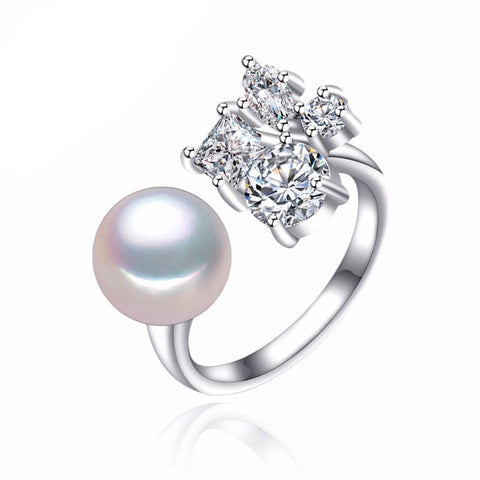

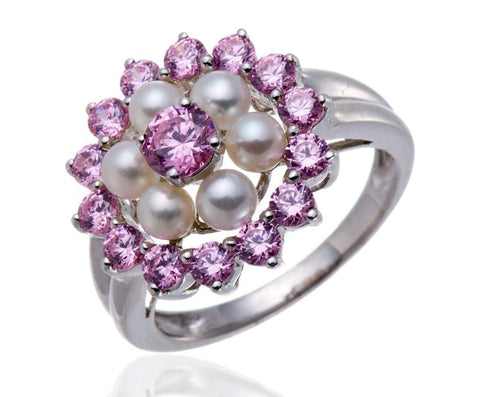




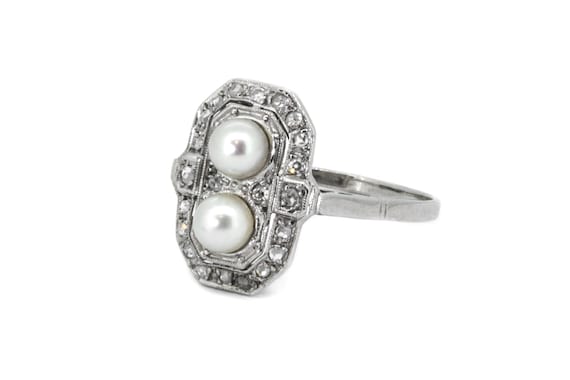
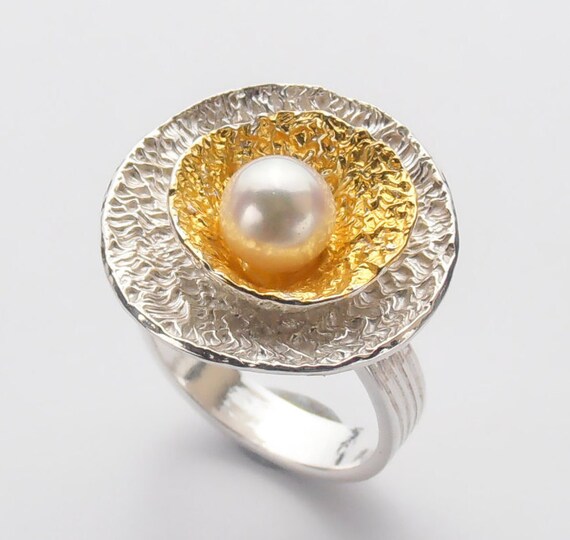
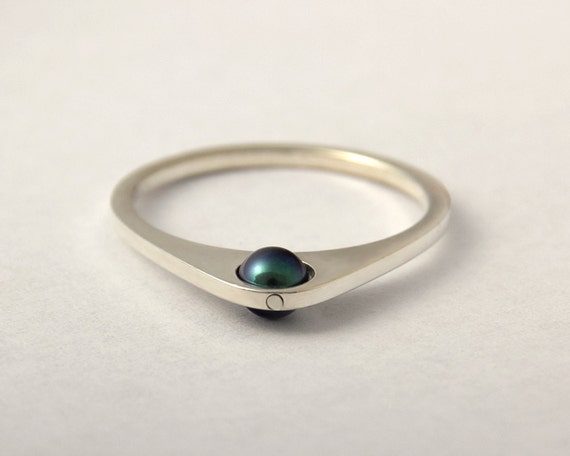
No comments:
Post a Comment